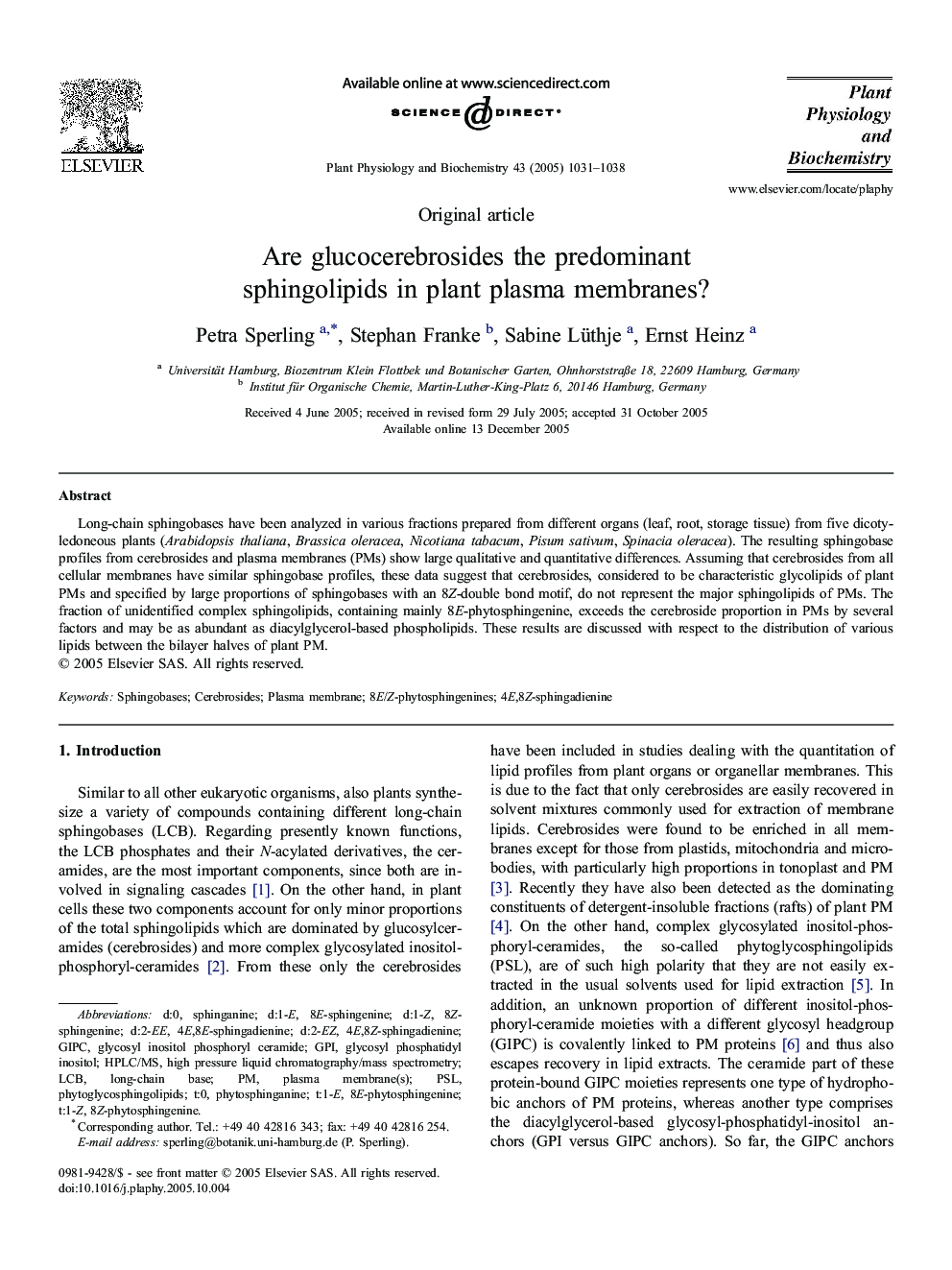| Article ID | Journal | Published Year | Pages | File Type |
|---|---|---|---|---|
| 10840551 | Plant Physiology and Biochemistry | 2005 | 8 Pages |
Abstract
Long-chain sphingobases have been analyzed in various fractions prepared from different organs (leaf, root, storage tissue) from five dicotyledoneous plants (Arabidopsis thaliana, Brassica oleracea, Nicotiana tabacum, Pisum sativum, Spinacia oleracea). The resulting sphingobase profiles from cerebrosides and plasma membranes (PMs) show large qualitative and quantitative differences. Assuming that cerebrosides from all cellular membranes have similar sphingobase profiles, these data suggest that cerebrosides, considered to be characteristic glycolipids of plant PMs and specified by large proportions of sphingobases with an 8Z-double bond motif, do not represent the major sphingolipids of PMs. The fraction of unidentified complex sphingolipids, containing mainly 8E-phytosphingenine, exceeds the cerebroside proportion in PMs by several factors and may be as abundant as diacylglycerol-based phospholipids. These results are discussed with respect to the distribution of various lipids between the bilayer halves of plant PM.
Keywords
Related Topics
Life Sciences
Agricultural and Biological Sciences
Plant Science
Authors
Petra Sperling, Stephan Franke, Sabine Lüthje, Ernst Heinz,
